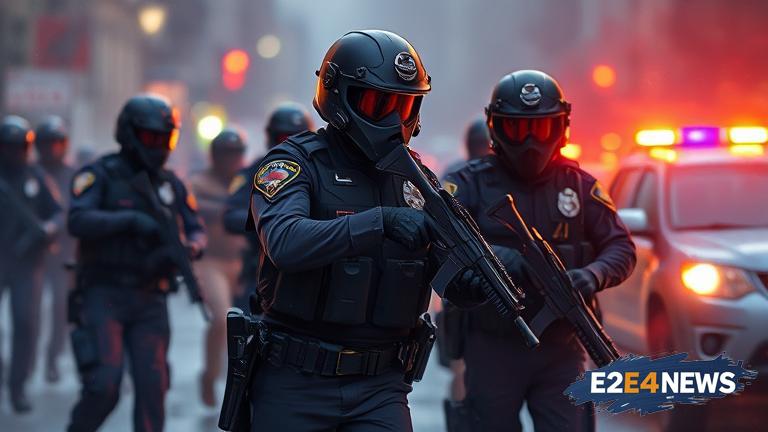The year 2025 has seen a disturbing trend of ambush attacks on law enforcement officers, with at least 36 reported incidents. This surge in targeted violence has raised concerns over officer safety and the need for increased measures to protect those who serve and protect their communities. The attacks, which have occurred across the United States, have resulted in injuries and fatalities, leaving families and colleagues devastated. The motivations behind these attacks are varied, but they often stem from a desire to harm or kill law enforcement officers. In some cases, the attackers have been motivated by extremist ideologies or a desire for notoriety. The rise in ambush attacks has prompted law enforcement agencies to reassess their tactics and protocols, with a focus on enhancing officer safety and security. This includes the use of advanced technology, such as body-worn cameras and ballistic vests, as well as increased training in counter-ambush tactics. Despite these efforts, the threat of ambush attacks remains a pressing concern, and law enforcement agencies must remain vigilant and proactive in their efforts to prevent and respond to these incidents. The impact of ambush attacks on law enforcement officers and their families cannot be overstated, with many experiencing trauma, anxiety, and stress in the aftermath of an attack. The community also plays a critical role in preventing ambush attacks, with tips and intelligence from the public often proving invaluable in identifying and apprehending suspects. As the threat of ambush attacks continues to evolve, law enforcement agencies must adapt and innovate, leveraging new technologies and strategies to stay ahead of those who seek to harm them. The federal government has also taken steps to address the issue, with legislation and funding allocated to support law enforcement agencies in their efforts to combat ambush attacks. Furthermore, the rise in ambush attacks has sparked a national conversation about the importance of supporting law enforcement officers and the need for increased resources and funding to enhance officer safety. In addition, the use of social media has been identified as a potential factor in the rise of ambush attacks, with some attackers using online platforms to spread extremist ideologies and glorify violence. Law enforcement agencies are working to combat this trend, with a focus on monitoring and disrupting online activity that promotes or glorifies violence against officers. The psychological impact of ambush attacks on law enforcement officers should not be underestimated, with many experiencing long-term trauma and stress. To address this, law enforcement agencies are providing increased support and resources to officers, including counseling and mental health services. The role of community policing in preventing ambush attacks is also critical, with law enforcement agencies working to build trust and relationships with the communities they serve. By fostering a sense of partnership and cooperation, law enforcement agencies can gather intelligence and prevent attacks before they occur. In conclusion, the rise in ambush attacks on law enforcement officers in 2025 is a pressing concern that requires immediate attention and action. Law enforcement agencies, the federal government, and the community must work together to prevent and respond to these incidents, and to support those who have been affected by them. The safety and security of law enforcement officers is a top priority, and it is essential that we take all necessary steps to protect them. The use of technology, training, and community engagement are all critical components of a comprehensive strategy to prevent ambush attacks and support law enforcement officers. Ultimately, the prevention of ambush attacks requires a collective effort, and it is only by working together that we can ensure the safety and security of those who serve and protect our communities.
